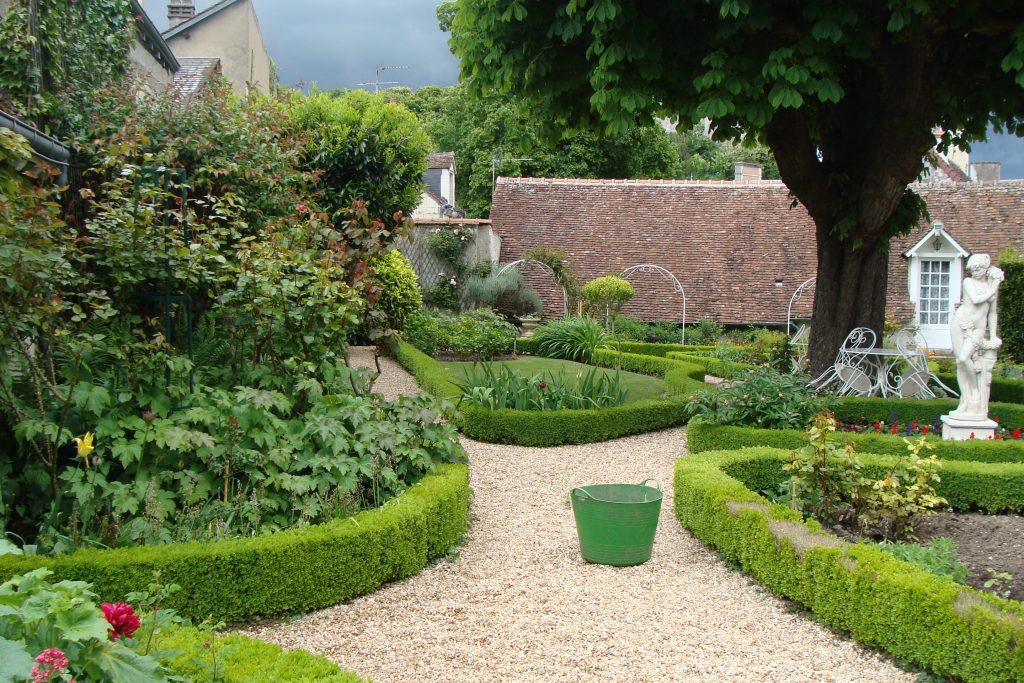Author’s note: in revising my forthcoming memoir, tentatively titled LANDSCAPE IN LAVENDER, I naturally needed to make some cuts, but it occurred to me that some of the deleted passages would make interesting entries for my “Commentary” blog. Here is the first such entry.



When I visited Paris for the first time at the age of seventeen, I stayed with my French grandmother’s sister, my great aunt. Paris exceeded all my expectations, but after only a couple of weeks, Aunt Muguette announced that she was taking me to St. Aignan-sur-Cher, our family’s ancestral town on the Cher River, in the Loire Valley. I hated leaving Paris, but I needn’t have worried.
When our train came to a halt at a sleepy little station in the middle of flat fields, a bluish hillside rose into view in the hazy summer distance. I could only dimly make out the outline of a château and a medieval church on the horizon. The minute we exited the station, Muguette’s servant, Henri, drove up in his little Renault, honking the horn. After hugging Aunt Muguette and shaking my hand, Henri lobbed our baggage into the trunk, and we set off toward town. As we approached the distant hillside, tight clusters of red tile-roofed stone buildings rose into focus. At the center of this huddle, two towers reached up to form the opposite ends of the medieval church. Off to the right, at a higher elevation, rose the walls and turrets of an imposing Renaissance château.
Henri’s Renault climbed the narrow cobblestone streets, zigzagging past a half-timber house that had stood on its spot since the fourteenth century, then past the church and a grand stone staircase that rose to the château’s courtyard. Past the stairway, the road widened into a “place” or plaza, making way for the weekly Saturday market. At last, after a sharp left turn, we came to Muguette’s house, which was named “Sousmont,” or ‘Below the Mountain,’ because it had previously belonged to an American named Dr. Underhill. Bending with the slight curve of the street, its outer walls were decorated with charming, teal-blue wood trellises that could have supported rose vines, had they not been so firmly attached to the house.
Muguette escorted me upstairs to her large and airy bedroom, overlooking the garden, insisting that it was mine for my first night in St. Aignan. After dropping our luggage, we stepped outside into the garden. There, a small gravel terrace stopped at a low stone wall. A pair of narrow stone stairways with iron railings curved toward each other against the wall, forming a horseshoe. At the top lay a generous upper garden where a magnificent horse-chestnut tree towered over large, amoeba-shaped parterres of boxwood separated by limestone gravel paths.
Beyond the boxwood hedges with their gravel paths, the château’s stone and brick facade appeared and the two towers of the church descended the hill to the right. Charmingly, one tower was Gothic, the other Romanesque, as if to admit that construction had been delayed long enough that architectural styles had changed by the time the basilica was finally finished. Then the church bell rang the five o’clock hour, and its deep tones reverberated across the town in long vibrations that proclaimed the sleepy but profound sacredness of more than one thousand years of religious faith. Sousmont, like the town it stood in, was both historic and humble, a thoroughly human habitation dwelled in for generations. Glancing around, I felt that I had never been in a place as enchanting as this one, but little did I suspect that it would one day inspire my entire landscape architecture career.
The next day, I bought a pad of sketch paper, which I filled with felt pen drawings St. Aignan. I loved how the quaint old buildings dripped with a depth of history and dignity entirely missing from my home on America’s Western frontier.
Soon, Aunt Muguette’s older daughter, Marie-Cécile, arrived from England with her four-year-old daughter, followed a few days later by her English husband, David Setford, and their three sons. The two older boys, Alan and David, were about my age, and I thoroughly enjoyed their rough housing and camaraderie, which I had never experienced before, having only one brother.
Even better, the entire family was artistically inclined. Together, we walked down country lanes, where we sat on rocks to sketch the sunny, verdant fields, distant church spires and silver glimpses of the river Cher. As each of us finished a sketch, we held it up for the others to view and applaud, without criticism or censure. At home, under my architect father’s influence, pursuing pleasure for its own sake always felt vaguely suspect or wrong, but in France I felt intensely alive, welcomed into a large family completely free from Dad’s domineering hand. It was an entirely new and joyful sensation to join this large family, all of us creating together and enjoying fun times.
Sociable and extroverted, the Setfords encouraged a series of their friends from England to join us on holiday, including a number of Alan and Dave’s young comrades, who camped nearby. Early one morning, I surprised one of the boys as he lay on the grass in his sleeping bag. Opening his eyes sleepily, he smiled at me from under the hood of his anorak. His brand-new mustache and crop of facial hair looked sexy enough that I wanted to kiss him and squeeze into the sleeping bag with him, but I ignored the thought. Homosexuals were strangers and others; as far as I was concerned, I couldn’t possibly be one of them.
Not long after the Setfords arrived, it was time to prepare for the climax of the summer season, the annual parade known as the “Son et Lumiere” (the Sound and Light Festival), in which all the residents re-enacted St. Aignan’s glorious medieval history. After we all dressed up as one figure or another from a millennium in the life of the town, David Senior led us yelling into “battle.” In our ad-hoc suits of armor, hastily cobbled and glued together from tinfoil and cardboard, we brandished wooden swords and flaming torches as we ran at dusk down the narrow cobblestone streets to the river embankment. There, the festival concluded with wine and dancing under a grove of ancient trees in a little park on an island in the river. I was impressed by how the young and the old, the teenagers and their middle-aged parents, all danced together in oscillating, ever-shifting combinations, demonstrating that our differing ages hardly mattered—we were all members of the same community.
Although I would not often return to Saint Aignan, for that fleeting moment I felt like I belonged to a larger tribe larger than my immediate family. I wanted to seize that conviction that I belonged and never let go.

